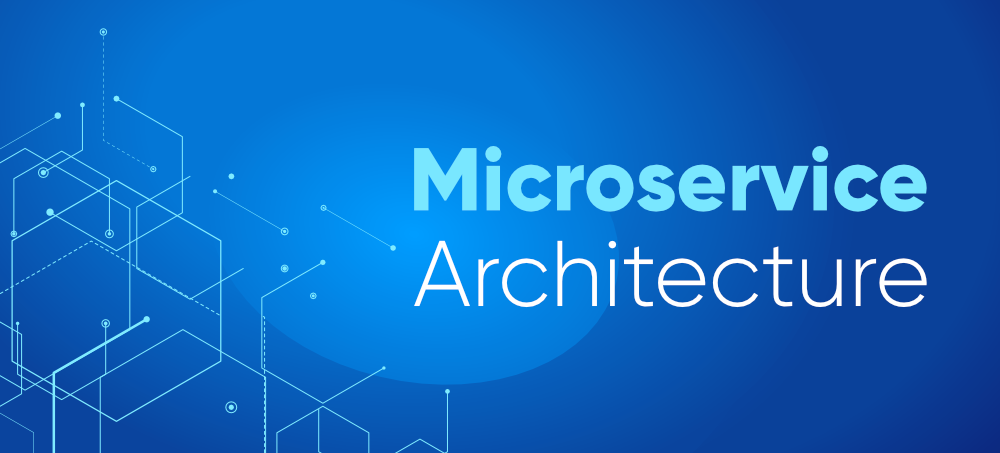10 Steps to Simplify Your DevSecOps

Automation is key when balancing security integrations with speed and scale.
DevOps adoption already focuses on automation, and the same holds true for
DevSecOp. Automating security tools and processes ensures teams are following
DevSecOps best practices. Automation ensures that tools and processes are used
in a consistent, repeatable and reliable manner. It’s important to identify
which security activities and processes can be completely automated and which
require some manual intervention. For example, running a SAST tool in a pipeline
can be automated entirely; however, threat modeling and penetration testing
require manual efforts. The same is true for processes. A successful automation
strategy also depends on the tools and technology used. One important automation
consideration is whether a tool has enough interfaces to allow its integration
with other subsystems. For example, to enable developers to do IDE scans, look
for a SAST tool that has support for common IDE software. Similarly, to
integrate a tool into a pipeline, review whether he tool offers APIs or webhooks
or CLI interfaces that can be used to trigger scans and request reports.
Next-Generation Layer-One Blockchain Protocols Remove the Financial Barriers to DeFi & NFTs
The rapidly expanding world of DeFi is singlehandedly reshaping the global
financial infrastructure as all manner of stocks, securities and transferable
assets are slowly but surely being tokenized and stored in digital wallets. New
protocols are arising daily that allow anyone with an internet connection or
smartphone to access ecosystems that are equivalent to digital savings accounts
but offer much more attractive yields than those found in the traditional
banking sector. Unfortunately, with most of the top DeFi protocols currently
operating on the Ethereum blockchain, the high cost of conducting transactions
on the network has priced out ordinary individuals living in countries where
even a $5 transaction fee is a significant amount of money capable of feeding a
family for a week. This is where competing new blockchain platforms have the
biggest opportunity for growth and adoption thanks to cross-chain bridges, a
growing number of opportunities to earn a yield on new DeFi protocols and
significantly smaller transaction cost.
The Dance Between Compute & Network In The Datacenter

In an ideal world, there is a balance between compute, network, and storage
that allows for the CPUs to be fed with data such that they do not waste too
much of their processing capacity spinning empty clocks. System architects try
to get as close as they can to the ideals, which shift depending on the nature
of the compute, the workload itself, and the interconnects across compute
elements — which are increasingly hybrid in nature. We can learn some
generalities from the market at large, of course, which show what people do as
opposed to what they might do in a more ideal world than the one we all
inhabit. We tried to do this in the wake of Ethernet switch and router stats
and server stats for the second quarter being released by the box counters at
IDC. We covered the server report last week, noting the rise of the
single-socket server, and now we turn to the Ethernet market and drill down
into the datacenter portion of it that we care about greatly and make some
interesting correlations between compute and network.
ZippyDB: The Architecture of Facebook’s Strongly Consistent Key-Value Store
/filters:no_upscale()/news/2021/09/facebook-zippydb/en/resources/1ZippyDb-Architecture-1631795724578.jpg)
A ZippyDB deployment (named "tier") consists of compute and storage resources
spread across several regions worldwide. Each deployment hosts multiple use
cases in a multi-tenant fashion. ZippyDB splits the data belonging to a use case
into shards. Depending on the configuration, it replicates each shard across
multiple regions for fault tolerance, using either Paxos or async replication. A
subset of replicas per shard is part of a quorum group, where data is
synchronously replicated to provide high durability and availability in case of
failures. The remaining replicas, if any, are configured as followers using
asynchronous replication. Followers allow applications to have many in-region
replicas to support low-latency reads with relaxed consistency while keeping the
quorum size small for lower write latency. This flexibility in replica role
configuration within a shard allows applications to balance durability, write
performance, and read performance depending on their needs. ZippyDB provides
configurable consistency and durability levels to applications, specified as
options in read and write APIs. For writes, ZippyDB persists the data on a
majority of replicas' by default.
CISA, FBI: State-Backed APTs May Be Exploiting Critical Zoho Bug

The FBI, CISA and the U.S. Coast Guard Cyber Command (CGCYBER) warned today that
state-backed advanced persistent threat (APT) actors are likely among those
who’ve been actively exploiting a newly identified bug in a Zoho single sign-on
and password management tool since early last month. At issue is a critical
authentication bypass vulnerability in Zoho ManageEngine ADSelfService Plus
platform that can lead to remote code execution (RCE) and thus open the
corporate doors to attackers who can run amok, with free rein across users’
Active Directory (AD) and cloud accounts. The Zoho ManageEngine ADSelfService
Plus is a self-service password management and single sign-on (SSO) platform for
AD and cloud apps, meaning that any cyberattacker able to take control of the
platform would have multiple pivot points into both mission-critical apps (and
their sensitive data) and other parts of the corporate network via AD. It is, in
other words, a powerful, highly privileged application which can act as a
convenient point-of-entry to areas deep inside an enterprise’s footprint, for
both users and attackers alike.
Algorithmic Thinking for Data Science
Generalizing the definition and implementation of an algorithm is algorithmic
thinking. What this means is, if we have a standard of approaching a problem,
say a sorting problem, in situations where the problem statement changes, we
would not have to completely modify the approach. There will always be a
starting point to attack the new problem set. That’s what algorithmic thinking
does: it gives a starting point. ... Why is the calculation of time and space
complexities important, now more than ever? It has to do with something we
discussed earlier – the amount of data getting processed today. To explain this
better, let us walk through a few examples that will showcase the importance of
large amounts of data in algorithm building. The algorithms that we casually
create for problem-solving in a classroom are very different from what the
industry requires when the amount of data being processed is more than a million
times what we deal with, in test scenarios. And time complexities are always
seen in action when the input size is significantly larger.
Forget Microservices: A NIC-CPU Co-Design For The Nanoservices Era

Large applications hosted at the hyperscalers and cloud builders — search
engines, recommendation engines, and online transaction processing applications
are but three good examples — communicate using remote procedure calls, or RPCs.
The RPCs in modern applications fan out across these massively distributed
systems, and finishing a bit of work often means waiting for the last bit of
data to be manipulated or retrieved. As we have explained many times before, the
tail latency of massively distributed applications is often the determining
factor in the overall latency in the application. And that is why the
hyperscalers are always trying to get predictable, consistent latency across all
communication across a network of systems rather than trying to drive the lowest
possible average latency and letting tail latencies wander all over the place.
The nanoPU research set out, says Ibanez, to answer this question: What would it
take to absolutely minimize RPC median and tail latency as well as software
processing overheads?
RESTful Applications in An Event-Driven Architecture
There are many use cases where REST is just the ideal way to build your
applications/microservices. However, increasingly, there is more and more demand
for applications to become real-time. If your application is customer-facing,
then you know customers are demanding a more responsive, real-time service. You
simply cannot afford to not process data in real-time anymore. Batch processing
(in many modern cases) will simply not be sufficient. RESTful services,
inherently, are polling-based. This means they constantly poll for data as
opposed to being event-based where they are executed/triggered based on an
event. RESTful services are akin to the kid on a road trip continuously asking
you “are we there yet?”, “are we there yet?”, “are we there yet?”, and just when
you thought the kid had gotten some sense and would stop bothering you, he asks
again “are we there yet?”. Additionally, RESTful services communicate
synchronously as opposed to asynchronously. What does that mean? A synchronous
call is blocking, which means your application cannot do anything but wait for
the response.
Application Security Tools Are Not up to the Job of API Security

With the advent of a microservice-based API-centric architecture, it is possible
to test each of the individual APIs as they are developed rather than requiring
a complete instance of an application — enabling a “shift left” approach
allowing early testing of individual components. Because APIs are specified
earliest in the SDLC and have a defined contract (via an OpenAPI / Swagger
specification) they are ideally suited to a preemptive “shift left” security
testing approach — the API specification and underlying implementation can be
tested in a developer IDE as a standalone activity. Core to this approach is
API-specific test tooling as contextual awareness of the API contract is
required. The existing SAST/DAST tools will be largely unsuitable in this
application — in the discussion on DAST testing to detect BOLA we identified the
inability of the DAST tool to understand the API behavior. By specifying the API
behavior with a contract the correct behavior can be enforced and verified
enabling a positive security model as opposed to a black list approach such as
DAST.
Microservice Architecture – Introduction, Challeneges & Best Practices

In a microservice architecture, we break down an application into smaller
services. Each of these services fulfills a specific purpose or meets a specific
business need for example customer payment management, sending emails, and
notifications. In this article, we will discuss the microservice architecture in
detail, we will discuss the benefits of using it, and how to start with the
microservice architecture. In simple words, it’s a method of software
development, where we break down an application into small, independent, and
loosely coupled services. These services are developed, deployed, and maintained
by a small team of developers. These services have a separate codebase that is
managed by a small team of developers. These services are not dependent on each
other, so if a team needs to update an existing service, it can be done without
rebuilding and redeploying the entire application. Using well-defined APIs,
these services can communicate with each other. The internal implementation of
these services doesn’t get exposed to each other.
Quote for the day:
"Leadership cannot just go along to get
along. Leadership must meet the moral challenge of the day." --
Jesse Jackson
No comments:
Post a Comment